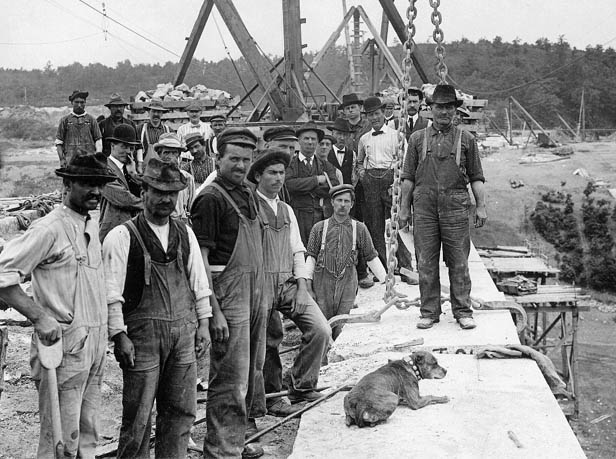In 1895, the Metropolitan Water Board was created to address the complexities of supplying drinking water to Boston’s burgeoning population. In the 100 years since 1795, the city’s surrounding population had grown from 19,000 residents to 750,000, and with it, the demand for water increased dramatically.
The question of water was nothing new. For a century, Boston had been working to upgrade its original system of hollow logs that carried water from Jamaica Pond. However, a series of sobering events underscored the need for modernization. An inability to source water during The Great Boston Fire of 1872 resulted in one of the most costly property losses caused by a fire in American history, and the influx of Irish immigration paired with the advent of indoor plumbing in the 1800s had rendered the Sudbury Aqueduct and Chestnut Hill Reservoir inadequate. After considering several water sources, the Metropolitan Water Board opted to dam the Nashua River above the town of Clinton. The result — the Wachusett Reservoir — was at the time the largest manmade water supply reservoir in the world
Construction on the Wachusett Reservoir began in 1897. More than 4,000 acres of land were cleared and entire neighborhoods were displaced. Some 500 buildings were destroyed and 4,000 graves were removed from the valley and reinterred elsewhere. As work began on the 200-foot-high masonry dam and 27 linear miles of tunnel, some 6.9 million cubic tons of soil were removed from the worksite.
The contract for the Wachusett Dam was awarded to the McArthur Brothers of Chicago in the fall of 1900. While the project had promised to prioritize local workers, few residents were willing to work underground. Black Americans and immigrants of Irish and Italian descent took up the difficult work of drilling, blasting, and transporting materials by mule.
Working conditions at the dam were notoriously hazardous. Air quality in the tunnels was poor, and workers were subject to fires, falling accidents, and even murder. Thirty-five workers were killed during the construction of the dam. Because many of the workers had traveled from afar, they were forced to live in dam-side shanty towns. Living quarters were tight, and latecomers were packed into rustic sod overflow barracks. The workers also faced discrimination at the hands of the townspeople. The town of Clinton went dry, banning alcohol sales for two years for fear of disorderly behavior.
Workers attempted to strike on several occasions. Most were shot down since there was no shortage of workers willing to replace them. Italian workers went on strike six times in four years, bargaining for modest wages of $1.50 per day, paid weekly. They also challenged the requirement to live at the job site.
The strikes triggered an investigation in Clinton, eventually leading to legislation that mandated weekly payment and lifted the requirement to live at the job site — laying important groundwork for future labor laws.
The Wachusett Dam was completed in 1905, eight years after work began. Today, the Wachusett Reservoir spans 37 miles of shoreline between Boylston and West Boylston. The Old Stone Church, perched on the reservoir’s west end, is both a photogenic tourist attraction and an enduring reminder of the residents and workers who sacrificed for the ambitious expansion of the Metropolitan Water Works.
Image detail from: Wachusett Dam, laying the last stone, laid by John Mercer, laborer, Clinton, Mass., Jun. 24, 1905. Source: Digital Commonwealth


